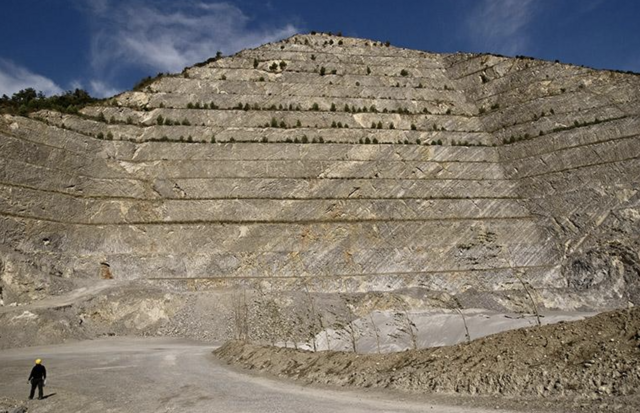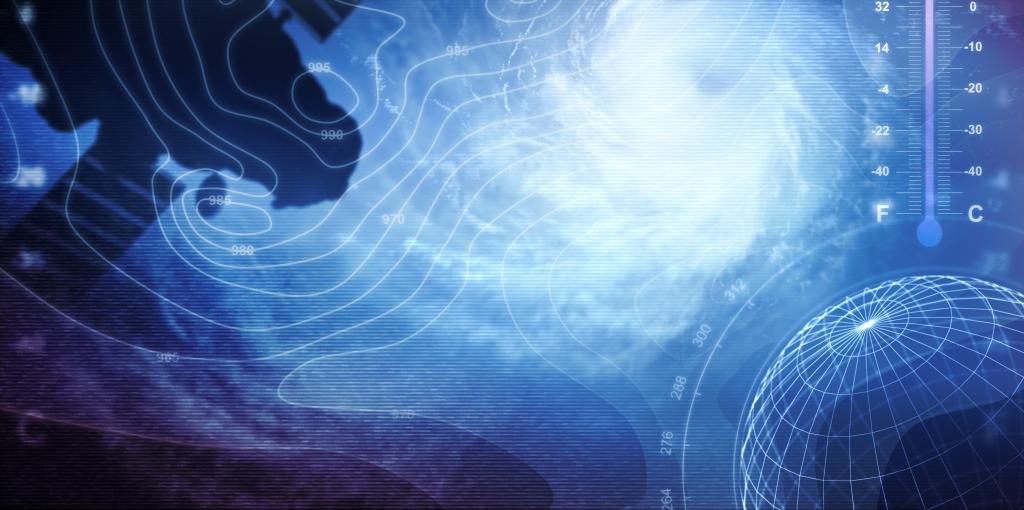Admission CTAs
Are the world’s oceans suffocating?
George Mason scientists analyze Jurassic limestone, offer insights into today’s ocean health, climate effects.

Atmospheric scientists indicate that, as our climate warms, the oceans lose oxygen, which impacts their habitability. A collaboration including George Mason University researchers have for the first time used advanced extraction techniques and modeling to identify and analyze a geochemical signature in Italian limestone that preceded a Jurassic Period mass extinction event which can serve as an analog to assess potential effects of today’s unprecedented rate of global warming and CO2 emissions.
Their results are detailed in a study published in the Proceedings of the National Academy of Sciences detailing measurements of oxygen loss in oceans leading to the extinction of marine species 183 million years ago.
“Think back to what we know about the Jurassic Period long ago,” encouraged Geoffrey Gilleaudeau, an assistant professor in atmospheric, oceanic, and earth sciences at George Mason who co-authored the study. Over a 300 to 500-thousand-year period, volcanic activity in what is modern South Africa unleashed an estimated 20,500 gigatonnes of carbon dioxide (CO2) into the ocean-atmosphere system. “This event, known as the Toarcian Oceanic Anoxic Event (T-OAE), created the lack of oxygen in the water during that time which caused a mass extinction of marine species,” Gilleaudeau explained.
Human activity since the Industrial Revolution starting just a few hundred years ago has already resulted in cumulative CO2 emissions representing 12% of the total CO2 released during the entire T-OAE at a much faster rate (in only 0.035% of the time), thus being a potential analog for modern-day climate change scenarios.
“To put this in perspective,” said the study’s lead author, George Mason Research Assistant Professor and geochemist, Mariano Remírez, “this is 28 to 38 times the extent of anoxia in the modern ocean, or about three times the size of the United States. This deoxygenation episode was followed by a gradual return to pre-T-OAE levels.” According to the authors, these results bolster the predictive power of past OAE events in foreshadowing the effects of anthropogenic CO2 emissions on marine ecosystems.
George Mason scientists worked with the University of Naples to collect thirty samples of stratified limestone from the Mercato San Severino section in southern Italy to assess the severity of ocean deoxygenation during the T-OAE.
Their analysis of the carbonate-rich rocks revealed a significant reduction in uranium isotope composition just before and during the T-OAE, indicating a severe peak of anoxia that covered 6 to 8 percent of the global seafloor. They then compared their results to carbonates from today’s oceans which resembled the Jurassic Caribbean, those tropical oceans that covered southern Italy. They compared the uranium signals in Italy to the uranium isotopes measured in limestones forming today, in the tropical oceans of the Bahamas.
Remírez, Gilleaudeau, and post doc, Tian Gan, mutually affiliated with George Mason University and the University of Maryland, used a mass spectrometer to actually measure the differences in mass of uranium with techniques only done in a few laboratories around the world.
“We used advanced techniques to decrease analytical uncertainty, accurately reconstructing the conditions from the carbonate rocks,” Gan explained. “They have a relatively low uranium concentration, which makes it very difficult to precisely measure.” When encountering the uranium concentration 1 part per million or less, the team had to use acids and various techniques to separate it out. Gan joins only a small group of female scientists who have been able to accomplish this feat.
The George Mason scientists also collaborated with colleagues from Duke University and Caltech who developed models to run computational simulations to come up with estimates.
“This event, and events like it, are the best analogs we have in Earth’s past for what is to come in the next decades and centuries,” said Michael A. Kipp, an Earth and Climate Science Assistant Professor at Duke University.
“It’s an analog, but not a perfect one, to predict what will happen to future oxygen loss in oceans from human-made carbon emissions, and the impact that loss will have on marine ecosystems and biodiversity,” said Remírez.
